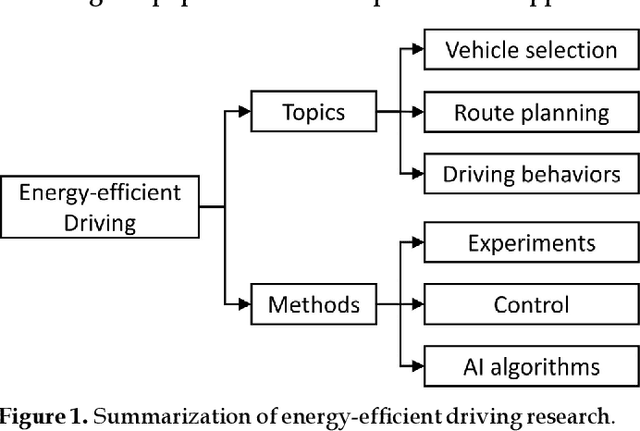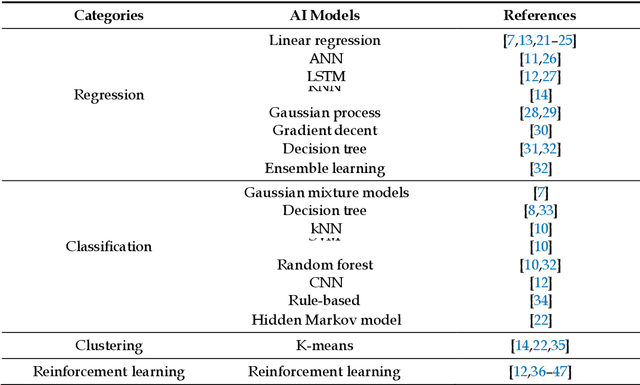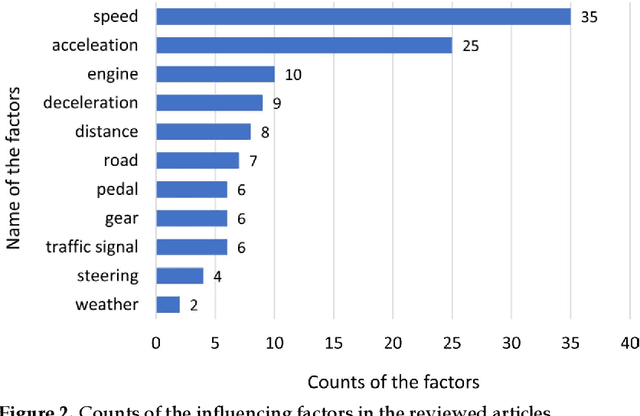A Scoping Review of Energy-Efficient Driving Behaviors and Applied State-of-the-Art AI Methods
Paper and Code
Mar 04, 2024



The transportation sector remains a major contributor to greenhouse gas emissions. The understanding of energy-efficient driving behaviors and utilization of energy-efficient driving strategies are essential to reduce vehicles' fuel consumption. However, there is no comprehensive investigation into energy-efficient driving behaviors and strategies. Furthermore, many state-of-the-art AI models have been applied for the analysis of eco-friendly driving styles, but no overview is available. To fill the gap, this paper conducts a thorough literature review on ecological driving behaviors and styles and analyzes the driving factors influencing energy consumption and state-of-the-art methodologies. With a thorough scoping review process, the methodological and related data are compared. The results show that the factors that impact driving behaviors can be summarized into eleven features including speed, acceleration, deceleration, pedal, and so on. This paper finds that supervised/unsupervised learning algorithms and reinforcement learning frameworks have been popularly used to model the vehicle's energy consumption with multi-dimensional data. Furthermore, the literature shows that the driving data are collected from either simulators or real-world experiments, and the real-world data are mainly stored and transmitted by meters, controller area networks, onboard data services, smartphones, and additional sensors installed in the vehicle. Based on driving behavior factors, driver characteristics, and safety rules, this paper recommends nine energy-efficient driving styles including four guidelines for the drivers' selection and adjustment of the vehicle parameters, three recommendations for the energy-efficient driving styles in different driving scenarios, and two subjective suggestions for different types of drivers and employers.
 Add to Chrome
Add to Chrome Add to Firefox
Add to Firefox Add to Edge
Add to Edge